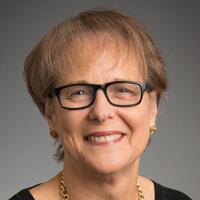
Supporting Student Transitions in Higher Education
For most students today, the path into and through higher education is complex.
As higher education institutions have opened wide their doors, inviting more students to enter, we find that “the typical student” is no longer meaningful to describe those entering our colleges and universities.
For example, not all students enter our doors directly from high school, nor do they start and finish at the same institution. Not all students attend full-time. Not all students have someone from their families who have attended college.
With the changing demographics—cultural, racial, stage-of-life, and socioeconomic—of today’s college student population, we see a greater number of ways in which students are progressing into and through higher education. More striking is that transitions—the movement of students into, within, through, and between institutions—have become the norm, rather than the exception, on a student’s academic journey.
Some transitions are more predictable, such as the transfer from a two-year to a four-year institution. Others—like the shift from full-time to part-time status due to unexpected life changes—are not. Common transitions we see include:
Transitions among institutions:
Attending more than one institution to obtain a credential has become the norm rather than the exception. In Texas, 72 percent of those who earn their baccalaureate degrees have community college hours on their university transcripts.
Transitions over a lifetime:
Adults entering—or coming back to—higher education while juggling families and careers have increased. According to the National Center for Education Statistics, as of 2015 in the United States, well over a third of students in higher education were over the age of 24.
Equally as common, although perhaps more difficult to see, are the transitions that can occur within a student’s own identity during her or his time in higher education. Think of the times you witnessed an insecure student entering your classroom only to leave at the end of the semester as a confident, emerging scholar.
Much has been written on the culture shock students experience when encountering policies, processes, vocabulary, and practices that are foreign to them when they first enter a college or university. These transitions may include students forming and re-forming their own identities as they resolve the cognitive dissonance between the demands of life in higher education and their current realities outside its halls.
This socialization happens repeatedly—as students transition into their programs of study, as they shift to a different program, or as they transfer to another institution. Particularly challenging can be situations where the courses taken at one institution appear to be devalued when rejected by a transfer institution.
So what does it all mean?
One of the primary responsibilities of the people who lead and teach at our higher education institutions is to redesign key institutional structures—advising protocols, course sequences, transfer requirements, etc.—to better facilitate student transitions to and through a college degree or certificate. That is, higher education institutions must change and adapt to the realities faced by contemporary students.
I share a few ideas of how we in higher education should support students as they move forward on their pathways to obtain a certificate or degree—and a rewarding future as citizens and participants in the 21st-century economy.
- Acknowledge the many transitions contemporary students must negotiate, and establish policies, systems, and processes that are more flexible and responsive to their needs.
- Develop intentional and embedded student supports across the entire institution that are coordinated and not siloed in departments or initiatives. Examples include offering integrated student success centers or using technology to connect student supports and academics.
- Implement clearly understood, guided pathways for students. Pathways are intentionally redesigned student experiences that help students choose, enter, and complete a program of study aligned with their goals for career and further education. These pathways provide a roadmap with defined milestones that illuminate predictable points of transition for students to follow. Particularly important are mathematics pathways that ensure students can access the right math for their programs of study.
- Build and maintain tenacious collaborations among faculty, administrators, and advisors across regional education ecosystems (K–12, community college, and university) that embrace student mobility and transitions, ensuring that students can apply and transfer credits for courses and programs.
I hope that the work of the Dana Center and countless other organizations, faculty members, institutional leaders, and policymakers will soon enable all students, regardless of their individual transitions, to succeed in college and beyond.
About the Author
Martha Ellis
I was a first-generation college student. Going to college changed my life, thanks to wonderful faculty and learning about disciplines I had no idea existed. For this reason, I have worked in higher education for almost my entire career. I have a deep respect for students and faculty, and I know that education changes lives.
Get in Touch
How can the Dana Center work with you to ensure that our nation's students are ready for postsecondary education and the contemporary workforce?

